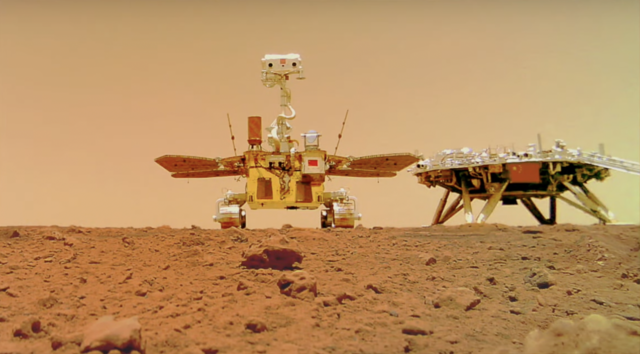
New evidence from China’s Zhurong rover suggests that liquid water could have been present on Mars much more recently than previously thought, possibly just 400,000 years ago. This water may have existed as snow on the planet’s sandy dunes, which are an iconic feature of Mars.
Presence of Water on Mars
Zhurong has significantly increased our knowledge of Mars ever since it landed on the Red Planet in early 2021. While it has been known for many years that Mars had ancient rivers and floods, it was believed that the last of the liquid water dried up three billion years ago.
However, last year, Zhurong discovered that liquid water could have been present on the planet just 700 million years ago, a far more recent estimate than previously thought.
Now, with new data gathered from investigating Utopia Planitia, a plain on the Martian surface, it appears that the potential timeline for liquid water on Mars has been brought forward even further.
Dunes on the Martian Surface
Zhurong has spent the last few years studying the windswept dunes on the Martian surface that cover the landscape. The data collected by the rover shows that these dunes are covered in thin, cracked crusts and clumps of particles that suggest the recent presence of liquid water.
The team working on the mission at the Chinese Academy of Sciences believes that these findings will be crucial for future exploration missions that aim to detect signs of life on Mars. The presence of certain minerals in the dunes indicates that the water had a wintery origin. The particles contained sulfates, silica, iron oxide, and chlorides.
Formation of Frost or Snow
When the temperature dropped below the frost point, the team thinks that the water vapor condensed as frost or snow on the dunes. Then, the frost or snow on the salts between the grains of sand would melt, making salty water.
Here is the most recent view of the surface of MARS captured by NASA's perseverance rover. pic.twitter.com/AkpmJt039N
— Amazing Astronomy (@MAstronomers) April 30, 2023
The salty water would evaporate, and the salts would form a crust by sticking to the particles. If the top kept drying out or freezing, cracks would form in it.
This was possible due to Mars’s changing axial tilt, which caused the ice caps to release high amounts of water vapor that condensed as snow closer to the equator a few million years ago.
Although no water ice was detected by the Zhurong rover, this model still offers a mechanism to replenish vapor in the atmosphere to help form frost or snow at low latitudes where the rover landed.
See all the latest news from Greece and the world at Greekreporter.com. Contact our newsroom to report an update or send your story, photos and videos. Follow GR on Google News and subscribe here to our daily email!



